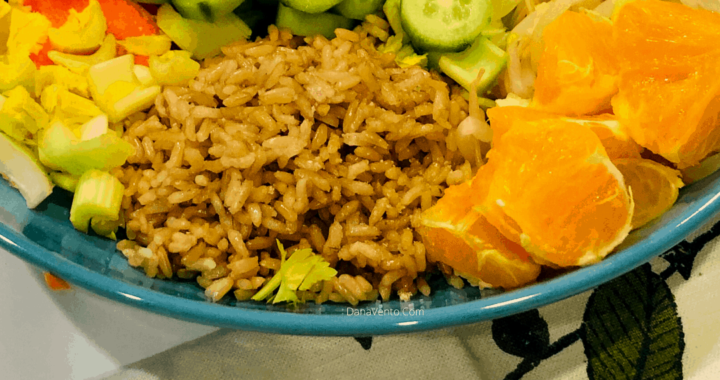Cabbage benefits
4 min read
Nutritional breakdown of cabbage
According to the USDA National Nutrient Database, one half cup of shredded cabbage (75 grams) contains 17 calories, 4 grams of carbohydrate (including 1 gram of fiber and 2 grams of sugar) and 1 gram of protein.
Eating a half-cup of cooked cabbage would provide 47% of your vitamin C needs for the day.
It also provides 102% of vitamin K, 8% of manganese, 6% of folate and lesser amounts of vitamin B-6, calcium, potassium and thiamin.
Cabbage contains the antioxidants choline, beta-carotene, lutein and zeaxanthin as well as the flavonoids kaempferol, quercetin, and apigenin.
Red cabbage tends to contain more of these compounds than green cabbage.
Possible health benefits of consuming cabbage
Consuming fruits and vegetables of all kinds has long been associated with a reduced risk of many adverse health conditions. Many studies have suggested that increasing consumption of plant foods like cabbage decreases the risk of obesity, diabetes, heart disease and overall mortality while promoting a healthy complexion, increased energy, and overall lower weight.
Protection from radiation therapy
A compound found in cabbage and other cruciferous vegetables known as 3,3′-diindolylmethane (DIM) has been shown to protect against the harmful effects of radiation therapy. In a study conducted at Georgetown University, rats were given a lethal dose of radiation. Some were left untreated, and others were treated with a daily injection of DIM daily for two weeks. All the untreated rats died, but over 50% of those receiving the DIM remained alive at the 30-day mark. The same researchers did the experiment on mice and found similar results. They were able to determine that the DIM-treated mice have higher counts or red and white blood cells and blood platelets, which radiation therapy often diminishes.
It is well-known that DIM has protective effects against cancer, but this study shows there is also hope for using it as a shield to protect healthy tissues during cancer treatment in the future.
Cancer prevention
Another cancer-fighting compound found in cabbage is sulforaphane. Research over the past 30 years has consistently shown that consuming cruciferous vegetables has been associated with a lower risk of cancer. More recently, researchers have been able to pinpoint that the sulfur-containing compounds (namely sulforaphane) that give cruciferous vegetables their bitter bite are also what give them their cancer-fighting power.
More studies with sulforaphane are testing its ability to delay or impede cancer. Promising results have been seen with multiple types of cancers including melanoma, esophageal, prostate and pancreatic. Researchers have discovered that sulforaphane has the power to inhibit the harmful enzyme histone deacetylase (HDAC), known to be involved in the progression of cancer cells. The ability to stop HDAC enzymes could make sulforaphane-containing foods a potentially powerful part of cancer treatment.
Another natural chemical found in cabbage, parsley, celery and other plants known as apigenin has been found to decrease tumor size in an aggressive form of breast cancer in a recent study conducted at the University of Missouri. Researchers claim that their findings show that apigenin has potential to be used as a non-toxic treatment for cancer in the future.
Red cabbage contains the powerful antioxidant anthocyanin, the same compound that gives other red and purple-hued fruits and vegetables their vibrant colors. Anthocyanins have been shown to slow cancer cell proliferation, kill already formed cancer cells and stop the formation of new tumor growths.
Heart health
The same potent anthocyanins in red cabbage that help protect against cancer have been shown to suppress inflammation that may lead to cardiovascular disease. A recent report in the American Journal of Clinical Nutrition associated the intake of flavonoid-rich foods with a lower risk of death from cardiovascular disease and stated that even small amounts of flavonoid-rich foods may be beneficial. The high polyphenol content in cabbage may also reduce the risk of cardiovascular disease by preventing platelet buildup and reducing blood pressure.
Immunity and digestion
A popular way to consume cabbage is in a fermented form such as sauerkraut and kimchi. Chocked full of probiotics, fermented foods are one of the best things you can consume for your immune and digestive systems. Healthy microbes generate an acidic environment to preserve and develop flavor and enzymes in fermentation that make vitamins and minerals easier to absorb.
The fiber and water content in cabbage also helps to prevent constipation and maintain a healthy digestive tract. Eating adequate fiber promotes regularity, which is crucial for the daily excretion toxins through the bile and stool.
Recent studies have shown that dietary fiber may even play a role in regulating the immune system and inflammation, consequently decreasing the risk of inflammation-related conditions such as cardiovascular disease, diabetes, cancer, and obesity.




